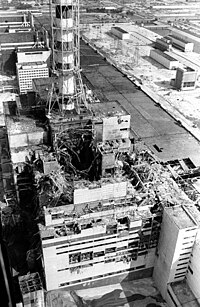
Photo from wikipedia
Background The aim of our work is to assess the potential role of texture analysis (TA), applied to computed tomography (CT) simulation scans, in relation to the development of insufficiency… Click to show full abstract
Background The aim of our work is to assess the potential role of texture analysis (TA), applied to computed tomography (CT) simulation scans, in relation to the development of insufficiency fractures (IFs) in patients undergoing radiation therapy (RT) for pelvic malignancies. Methods We analyzed patients undergoing pelvic RT from Jan-2010 to Dec-2016, 31 of whom had developed IFs of the pelvis. We analyzed CT simulation scans using LifeX Software©, and in particular we selected three regions of interest (ROI): L5 body, the sacrum and both the femoral heads. The ROI were automatically contoured using the treatment planning software Raystation©. TA parameters included parameters from the gray-level histogram, indices from sphericity and from the matrix of GLCM (gray level co-occurrence matrix). The IFs patients were matched (1:1 ratio) with control patients who had not developed IFs, and were matched for age, sex, type of tumor, menopausal status, RT dose and use of chemotherapy. Univariate and multivariate analyses (logistic regression) were used for statistical analysis. Results Significant TA parameters on univariate analysis included both parameters from the histogram distribution, as well from the matrix of GLCM. On logistic regression analysis the significant parameters were L5-energy [P=0.033, odds ratio (OR): 1.997, 95% CI: 1.059-3.767] and FH-Skewness (P=0.014, OR: 2.338, 95% CI: 1.191-4.591), with a R2: 0.268. A ROC curve was generated from the binary logistic regression, and the AUC was 0.741 (95% CI: 0.627-0.855, P=0.001, S.E.: 0.058). Conclusions In our experience, 3D-bone CT TA can be used to stratify the risk of the patients to develop radiation-induced IFs. A prospective study will be conducted to validate these findings.
Journal Title: Quantitative imaging in medicine and surgery
Year Published: 2018
Link to full text (if available)
Share on Social Media: Sign Up to like & get
recommendations!